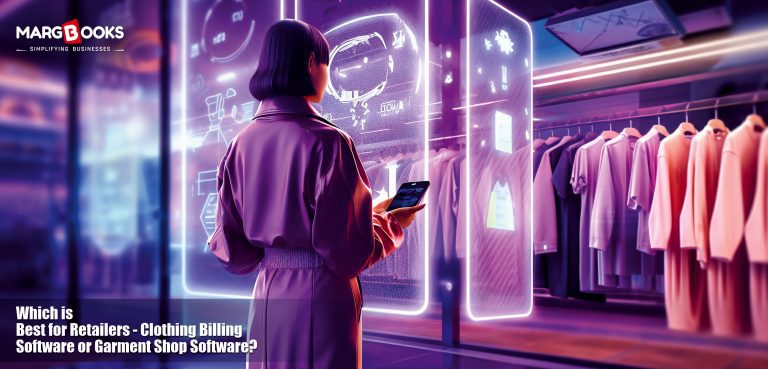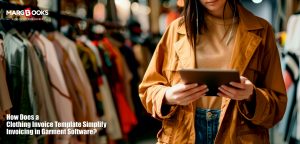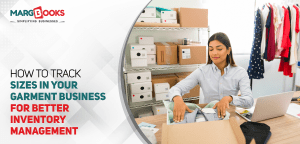In today’s fast-paced retail world, especially in the fashion and apparel sector, having the right billing and inventory management software can make a world of difference. If you’re a retailer running a clothing store or a garment outlet, you might have asked yourself at some point: Which is better—Clothing Billing Software or Garment Shop Software? While the terms might seem interchangeable, there are subtle differences that can influence your business operations significantly.
Let’s break down the options and find out which software suits your business needs best.
Understanding the Basics: What’s the Difference?
Before diving into the pros and cons, it’s essential to clarify the basic difference:
- Clothing Billing Software is usually designed with a broader spectrum in mind. It focuses on billing, invoicing, and GST compliance for general clothing and fashion retail stores. It might include features like barcode printing, inventory management, discount systems, and loyalty program integrations.
- Garment Shop Software, on the other hand, often caters to traditional garment businesses—especially local or boutique-style shops. These may require unique features like unit conversions (e.g., pieces, dozens), tailor measurements, seasonal stock tracking, and sometimes even credit or lay-by systems for regular customers.
That said, many modern software solutions blur these lines and offer hybrid features that can support both retail styles.
Key Features Retailers Should Look For
Whether you choose Clothing Billing Software or Garment Shop Software, the right solution should help you simplify everyday tasks while giving you deep insights into your business. Here are some crucial features to consider:
1. Billing and Invoicing
- Quick billing for faster checkouts
- GST-ready invoices
- Integration with barcode scanners
- Customised invoice formats
2. Inventory Management
- Real-time stock tracking
- Alerts for low stock
- Category-wise stock management (men’s, women’s, kids’ wear, etc.)
- Handling multiple sizes, colours, and designs
3. Customer Relationship Management (CRM)
- Customer database management
- SMS/WhatsApp notifications
- Loyalty points and discount schemes
4. Multi-Store & Cloud Access
- Manage multiple outlets from one dashboard
- Access data anytime, anywhere via the cloud
Why Modern Retailers Prefer Clothing Billing Software
For those running a full-scale clothing store or fashion retail chain, Clothing Billing Software often proves to be the smarter choice. Here’s why:
- It supports a wider range of products and variations, including size, colour, style, and brand.
- Most clothing software comes with built-in GST compliance, which makes it easy to file returns without a CA.
- Offers seamless integration with e-commerce platforms for retailers who sell both online and offline.
- Provides advanced analytics—know which product is selling best, your peak hours, or even what promotions are working.
For example, MargBooks, a well-known cloud-based software solution in India, offers a tailored Clothing Billing Software module that caters perfectly to the needs of garment and apparel retailers. With features like barcode generation, digital payments, inventory sync, and user-friendly reports, MargBooks has become a go-to choice for both small boutiques and large retail chains.
Where Garment Shop Software Shines
If you’re running a traditional garment shop, especially in tier-2 or tier-3 cities, or dealing with wholesale garments, Garment Shop Software might be more aligned with your needs.
Here’s how it helps:
- Simplified billing format for non-scanner-based billing
- Flexibility to sell in pieces, sets, or bulk quantities
- Tailoring or alteration module (ideal for shops offering custom fit)
- Easy to operate, even for staff with limited computer knowledge
Some businesses also prefer Garment Billing Software that includes features like credit sales tracking, local language support, and bulk invoice printing—features not always present in modern fashion retail software.
Making the Right Choice: Things to Consider
Before you decide, ask yourself a few questions:
- Do I need cloud access and advanced analytics?
- Do I sell fashion brands with varying styles and SKUs?
- Is GST billing a challenge I want to simplify?
- Do I need multi-store management and barcode support?
- Am I looking for a software that can also support online sales?
If the answer to most of these is yes, then Clothing Billing Software like MargBooks might be the right pick.
On the other hand, if you run a more traditional, walk-in-based store and prefer simplicity and ease of use, a Garment Shop Software or even a standalone Garment Billing Software could be more cost-effective and practical.
Final Verdict: Go Beyond Billing
Choosing between Clothing Billing Software and Garment Shop Software isn’t just about billing—it’s about your business vision.
If you’re aiming to scale up, expand your digital footprint, or streamline operations across multiple locations, Clothing Billing Software gives you the edge. Especially with solutions like MargBooks, which offer everything from cloud billing to real-time inventory and GST-ready invoicing, the transition to tech-savvy retailing becomes seamless.
However, if your business relies more on relationship-based sales, traditional operations, and local customers, a classic Garment Billing Software might serve you well without overwhelming your staff with tech-heavy features.
Final Thoughts
In the end, it’s not about which software is better—it’s about which one is better for your business. Whether you choose Clothing Billing Software or Garment Shop Software, ensure it aligns with your workflow, customer base, and future goals.
Still confused? Start with a free demo of a tool like MargBooks. It gives you the best of both worlds—simplicity for traditional users and advanced features for growing retailers.




